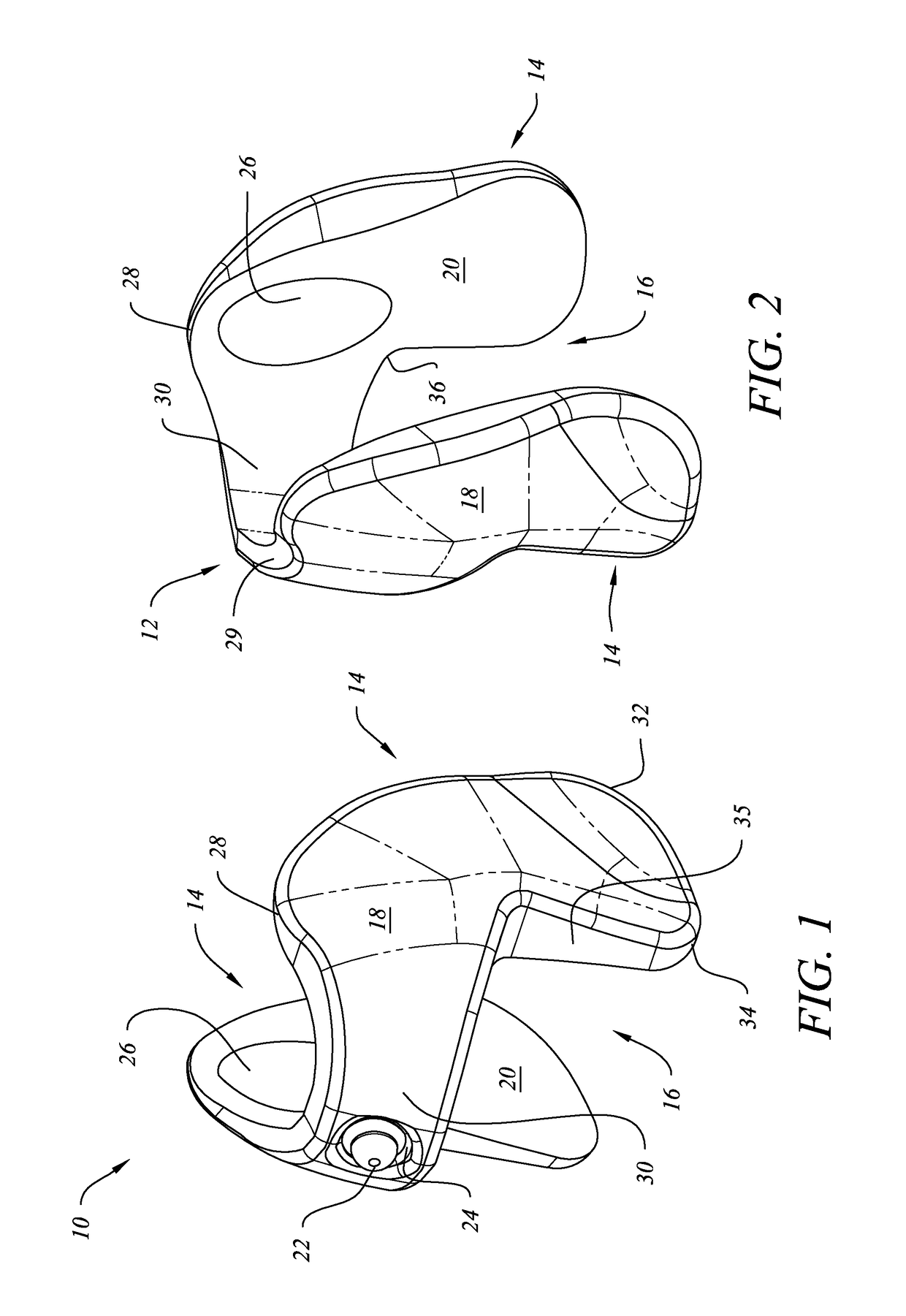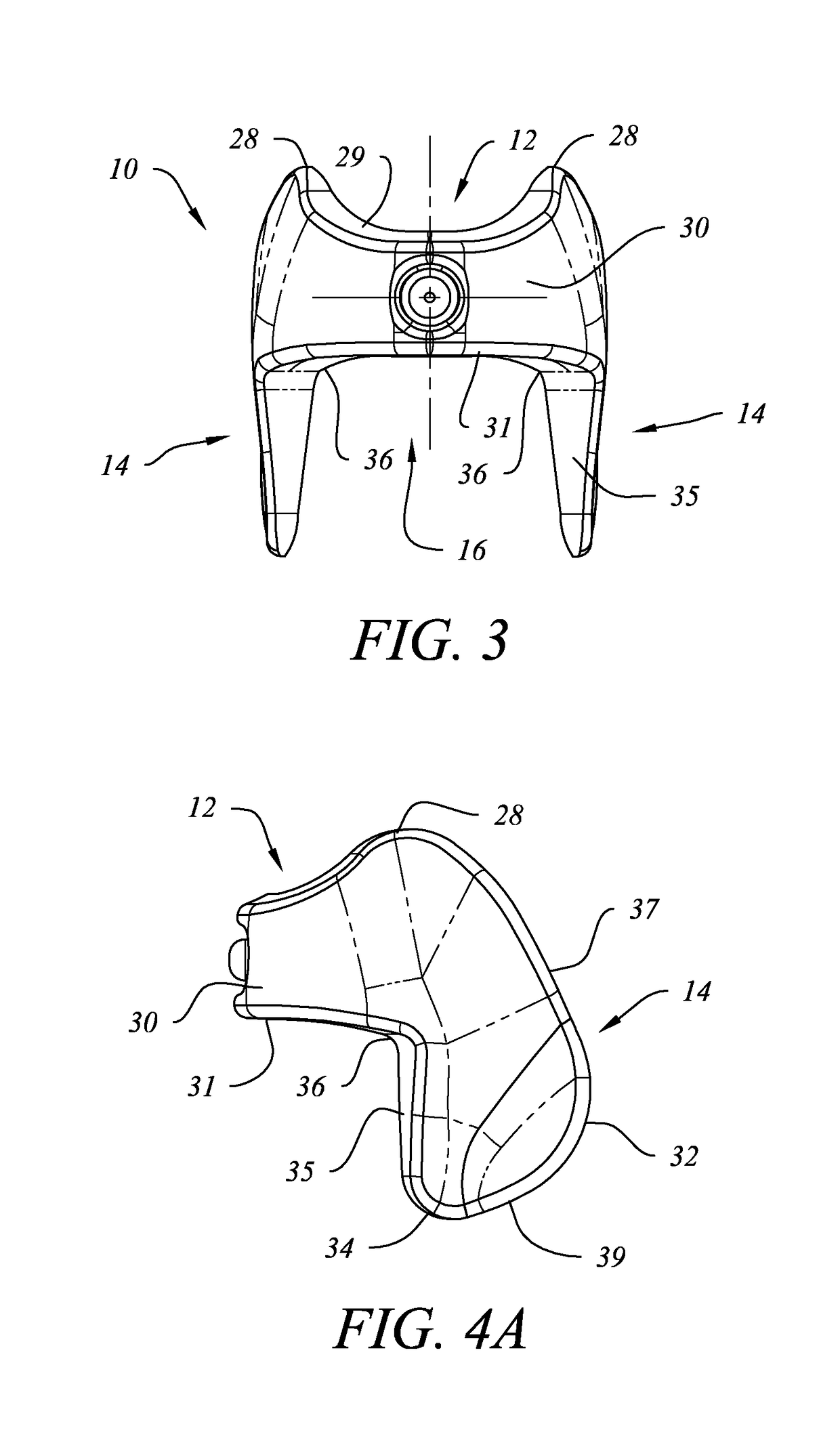Eyeglass positioning device
a positioning device and eyeglass technology, applied in the field of eyeglass positioning devices, can solve the problems of unobtrusiveness and discreteness, and achieve the effects of less distortion, less distortion, and greater flexibility in the amount of height adjustmen
- Summary
- Abstract
- Description
- Claims
- Application Information
AI Technical Summary
Benefits of technology
Problems solved by technology
Method used
Image
Examples
Embodiment Construction
[0047]Referring to FIGS. 1-7, a preferred embodiment of an eyeglass positioning device 10 according to the invention is shown. In this embodiment, eyeglass positioning device 10 preferably comprises a generally U-shaped connector 12 and two support arms 14 (a right arm and a left arm) extending in a substantially perpendicular direction from each rearward end 33 of the U-shaped connector 12. Connector 12 and support arms 14 are preferably unitarily molded as a single body comprising an outer or exterior surface 18, a portion of which would contact an eyeglass frame in use, and an inner or interior surface 20, at least of portion of which contacts the user's nose when in use. An open area 16, into which a user's nose is placed, is formed on the interior surface side of positioning device 10 between connector 12 and support arms 14. Dashed lines on FIGS. 1-7 show contour or curvature on exterior surface 18.
[0048]Connector 12 preferably comprises a central portion 30 that forms a round...
PUM
 Login to View More
Login to View More Abstract
Description
Claims
Application Information
 Login to View More
Login to View More - Generate Ideas
- Intellectual Property
- Life Sciences
- Materials
- Tech Scout
- Unparalleled Data Quality
- Higher Quality Content
- 60% Fewer Hallucinations
Browse by: Latest US Patents, China's latest patents, Technical Efficacy Thesaurus, Application Domain, Technology Topic, Popular Technical Reports.
© 2025 PatSnap. All rights reserved.Legal|Privacy policy|Modern Slavery Act Transparency Statement|Sitemap|About US| Contact US: help@patsnap.com



